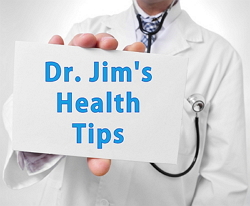
No doubt, fat is one of the more unpleasant words in the English language. Fat cells are of two types: white fat (to store energy, more) and brown fat (baby fat, to create warmth, fewer). In numbers, they only make up less than one percent of the body’s total cells (25 billion) but there appears to be many more because as one gains fat the cells enlarge; fat cells do not appreciably multiply!
This is an aging and sickness-promoting problem because as fat cells enlarge the capillaries feeding them oxygen are inadequate and the starving cells signal that they are in trouble. These signaling substances increase the aging process as the enlarged cells pepper the body with damaging substances.
Some of the damaging substances increase the body’s inflammatory status with many long-term effects, including increased cancer, vascular disease, dementia, and arthritis among others. Following fat reduction, markers for inflammation decreased.1
So, how can we best reduce our body’s fat load and become healthier? The majority of calories are contained in fat (9/gram), next sugars (4/gram), and last in protein (4/gram but actually 2.6). Most diets (not a dirty word) concentrate on calories which seems the right approach for weight loss. However, Hall researched the subject in an interesting way and found that more fat was lost by restricting FAT than low-carb diets when the same calorie restrictions applied.2 There should be no surprise there. Overall weight loss does not vary between the two restricted diets.3
Exercise is hyped for weight and fat loss. Some important facts should be appreciated to maximize efforts. our bodies have three main energy sources: immediate, reserve, and supplemental. The immediate is composed of blood sugar complexes, located in the liver and muscle to provide rapid sources of energy. The reserve source is fat, naturally in our fat cells, released when needed. The supplemental is our muscular protein which is converted into sugar in the liver when the other two sources are insufficient. Muscle breakdown happens during starvation and is appreciated as wasting away of body mass.
There is evidence that calorie-restricted diets that include added protein do more to reduce body fat.4 Further and perhaps more important, when the metabolic indicators predicting future heart disease were measured, combining calorie-restricted and high protein diets provided the best improvement of the associated danger.5
This means that for the first 30 minutes or so during sustained exercise, the body principally uses its stored sugar and after 30 minutes begins to call upon the fat cells. Then one can be hungry just after exercise and want to take in calories, defeating any significant reduction in fat. Accordingly, for fat reduction exercise longer. Resistance training can work well if muscle is increased.
Remember when you were young, you could eat anything you wanted without appreciable weight gain. Lean body mass burns the calories up.
1. Beavers KM, Beavers DP, Newman JJ, et al. Effects of total and regional fat loss on plasma CRP and IL-6 in overweight and obese, older adults with knee osteoarthritis. Osteoarthritis and cartilage / OARS, Osteoarthritis Research Society 2015;23:249-56.
2. Hall KD, Bemis T, Brychta R, et al. Calorie for Calorie, Dietary Fat Restriction Results in More Body Fat Loss than Carbohydrate Restriction in People with Obesity. Cell metabolism 2015;22:427-36.
3. Pirozzo S, Summerbell C, Cameron C, Glasziou P. Advice on low-fat diets for obesity. Cochrane database of systematic reviews 2002:CD003640.
4. Wycherley TP, Moran LJ, Clifton PM, Noakes M, Brinkworth GD. Effects of energy-restricted high-protein, low-fat compared with standard-protein, low-fat diets: a meta-analysis of randomized controlled trials. The American journal of clinical nutrition 2012;96:1281-98.
5. Dumesnil JG, Turgeon J, Tremblay A, et al. Effect of a low-glycaemic index–low-fat–high protein diet on the atherogenic metabolic risk profile of abdominally obese men. The British journal of nutrition 2001;86:557-68.

